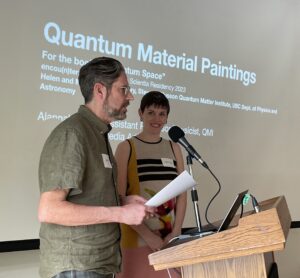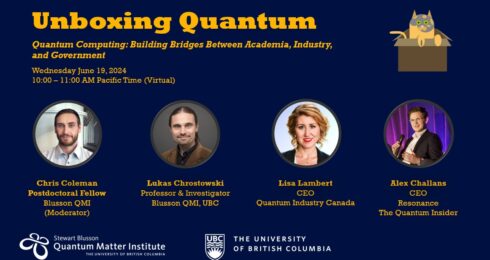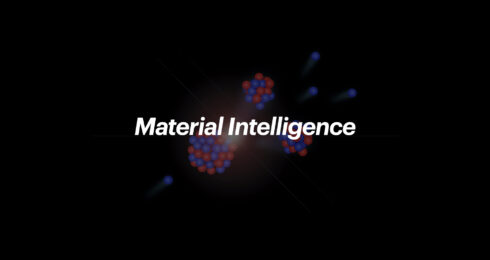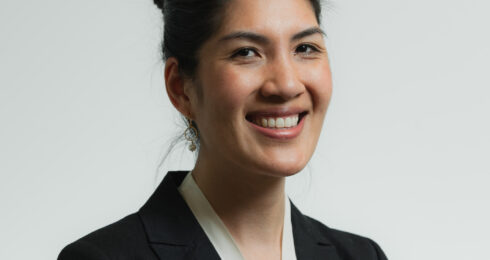The following long-form article was produced by Ars Scientia Program Manager and Blusson QMI Senior Research Associate Dr. James Day, as part of the Ars Scientia-inspired creative writing course Storytelling, Persuasion, and Physics at UBC.
When Bongos Met Brushes
There is a famous anecdote about a renowned scientist. The telling begins in the late 1950s, with a party that was in full swing. The room was alive with energy, as people chatted, danced, and drank to the sounds of rock and roll and jazz. Women wore poodle skirts, saddle shoes, and bright lipstick, while men sported slim-cut suits and fedoras. Guests shared their views on current events, politics, and popular culture amid the smoke and chatter.
Suddenly, the beat changed, and a small group gathered around future Nobel Prize-winning physicist Richard Feynman, playing the bongo drums with intricate rhythms. As Feynman played, artist Jirayr Zorthian was inspired to transform himself into a living canvas, smearing shaving cream across his chest in wild designs. This spontaneous act led to an intimate conversation between the two, where they vowed to share and teach each other their respective crafts. Over time, Feynman found himself diving into art, grasping the nuances of drawing from Zorthian, while Zorthian ventured into the abstract world of quantum mechanics.
Their collaboration went beyond casual exchange. Feynman’s sketches, influenced by Zorthian, showcased a developing understanding of form and movement. Zorthian’s practice began reflecting hints of quantum-inspired patterns. It wasn’t just about combining two fields; it was about how they infused and transformed each other.

Image: Resident artist jg mair and Dr. Alannah Hallas at Ars Scientia’s Annual Symposium, UBC Botanical Gardens, 2023.
This union of art and science is more than an entertaining tale: it set a precedent. Their experimental blending of worlds became an archetype for subsequent collaborations.Unions between scientists and artists have persisted into the present era. Through personal involvement, I know that the results, while perhaps less renowned, carry the same potential for brilliance and innovation, challenging and reshaping our perceptions of what’s achievable when worlds converge.
In recent years Feynman’s relationship with Zorthian has loomed in importance to me as I’ve become involved in a program called Ars Scientia, which embodies the excitement of what those two found possible in collaboration.
Merging the practices of art and science in the growing field of interdisciplinary research, Ars Scientia is a research partnership at the University of British Columbia (UBC) between the Blusson Quantum Matter Institute (Blusson QMI), the Department of Physics and Astronomy, and The Morris and Helen Belkin Art Gallery.
Despite the geographical separation between the Ars Scientia team, with my physics colleagues and I situated in the south and the gallery group in the north, the Main Mall that bisects the campus serves as a symbolic representation of our project’s aim. It embodies our intention to unite these seemingly disparate parts, creating a cohesive whole from the different elements. As a core practice on a university campus, Ars Scientia is a special example of science and art interacting.
Continue reading on the Ars Scientia website here.


